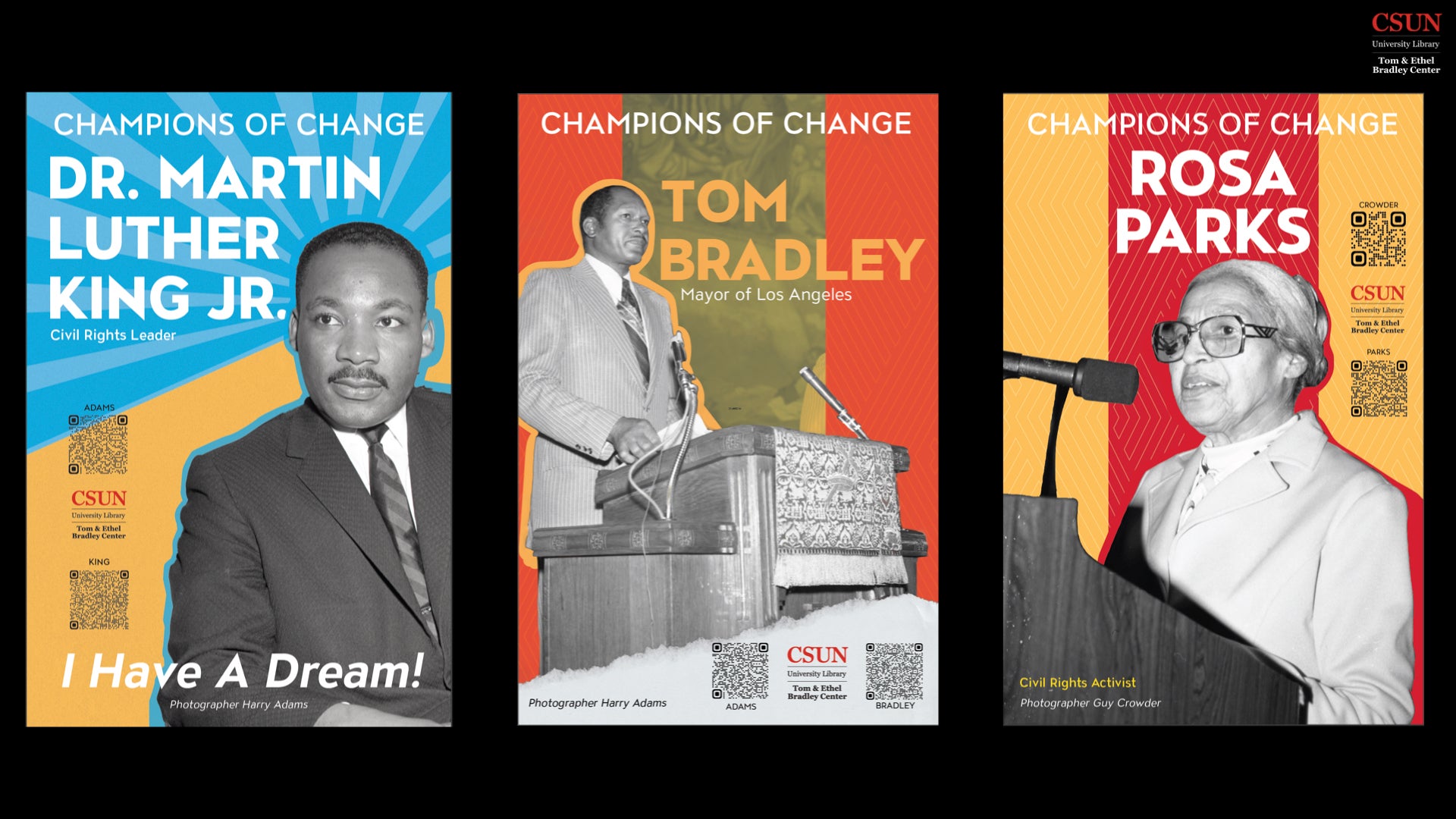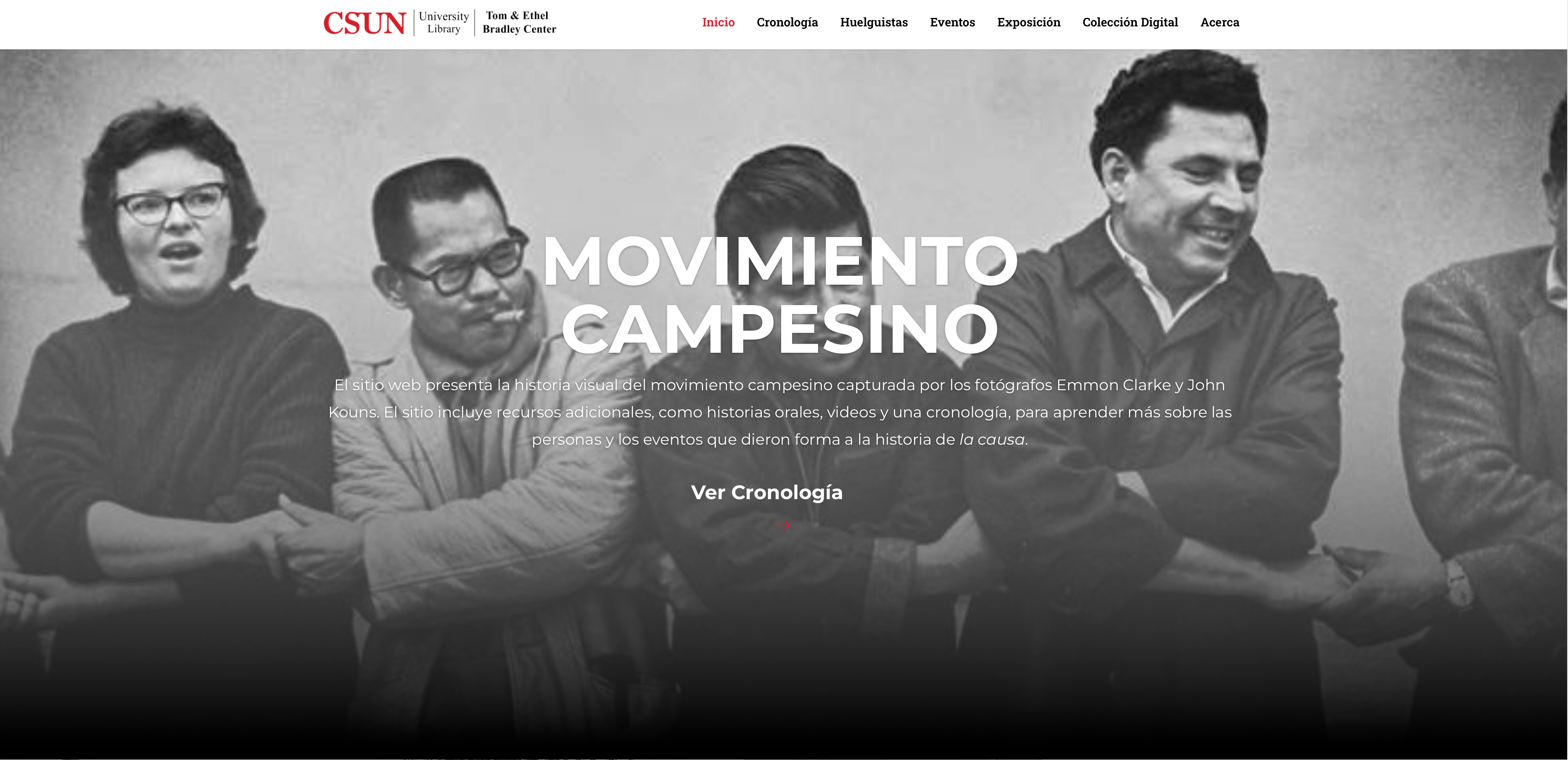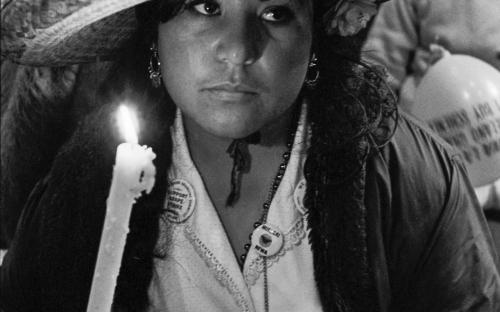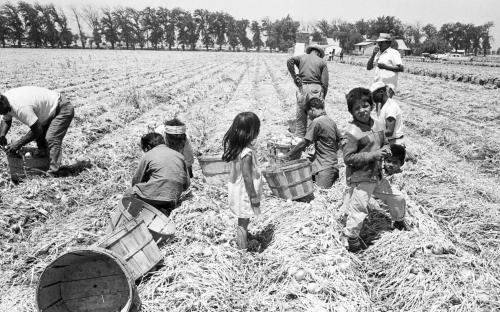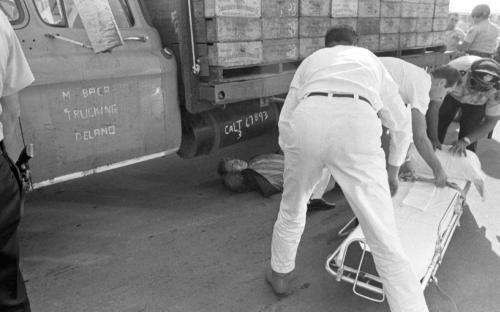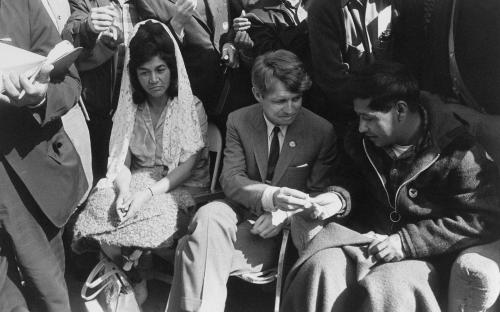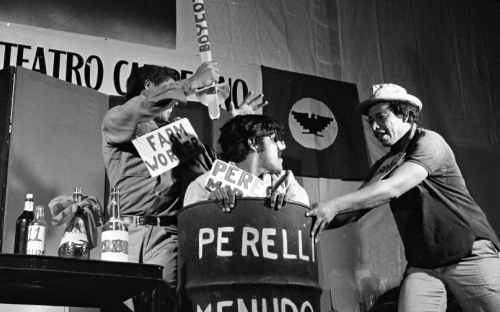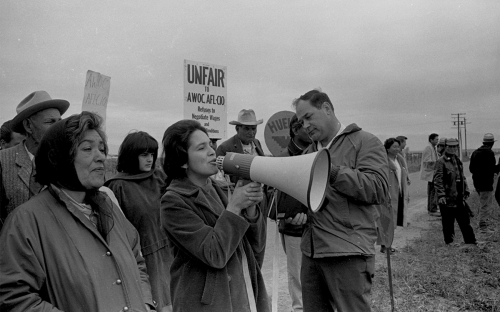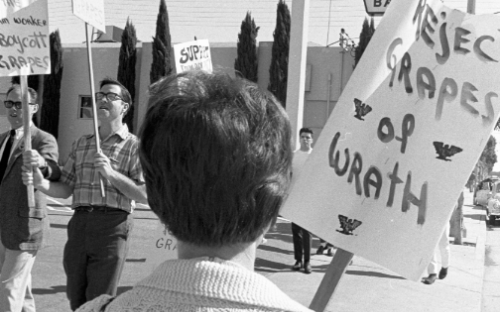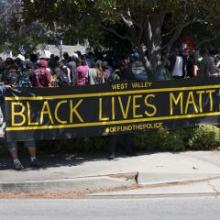
Tom & Ethel Bradley Center

Charles Williams Online Collection

Harry Adams Online Collection

Guy Crowder Online Collection

Richard Cross Online Collection

Julián Cardona Collection

Emmon Clarke: Farmworker Movement Collection

John Kouns: Farmworker Movement Collection

Keith Rice: Black Lives Matter Protest Collection

Black Power Archives Oral History Project

Educational Resources

Oral History Program

Border Studies
Champions of Change Posters
Our Campions of Change poster series has two goals. First, to diversify our campus visual infrastructure by facilitating that these posters are displayed in spaces controlled by departments, centers, faculty offices, student clubs, the USU, the Soraya, and student housing. And second, to increase interest among the campus community about the visual resources housed in the Library’s photographic collections.
CSUN students designed 15 posters (24 x 36") with QR codes to the library's digital photographs and the photographers' landing pages. Social justice champions included in this series are: Tom Bradley, Martin Luther King Jr., Rosa Parks, Shirley Chisholm, Philip Vera Cruz, Dolores Huerta, Malcolm X, César Chávez, Muhammad Ali, Angela Davis, Larry Itliong, Sir Lady Java, Saint Óscar Romero, Black Lives Matter, and Ether Chávez Cano. You can contact the Bradley Center for more information.
The Farmworker Movement Website
Our bilingual (English-Spanish) website on the Farmworker Movement features the visual history of the farmworker movement as captured by photographers Emmon Clarke and John Kouns. Thanks to a grant from the National Endowment for the Humanities, we digitized and created metadata for more than 6,000 photographs by Clarke and Kouns that form the Farmworker Movement Collection at CSUN University Library’s digital collections.
The site uses those photographs with their links, when available, to the library’s digital collection; it includes short biographical sketches of the people who participated in the movement and additional resources, like oral histories, videos, and a timeline, to learn more about the people and the events that shaped the history of La Causa. Visit the website here.
Do-It-Yourself Exhibition
In addition to the website, we created a bilingual (English-Spanish) Do-It-Yourself (DIY) exhibition designed to allow—in the spirit of the Farmworker Movement—schools, unions, and other community and non-profit organizations to print and mount their exhibition on the Farmworker Movement. These DIY exhibitions feature images and QR codes, providing access to our digital collection and other resources for deeper insight into this significant social and labor movement.
We created 12 panels in English and 12 panels in Spanish, on different aspects of the Farmworker Movement: An introductory panel, César Chávez, Dolores Huerta, people (huelguistas) who participated in the movement, the role of farmworking children, El Teatro Campesino, the grape boycott, the pickets, the fieldwork, the first fast done by César Chávez in 1968, the housing conditions, and the first march to Sacramento. You can learn more here.

We are excited to announce the recent release of videos in The Black Power Archives Oral History Project, a collection of oral histories documenting the experiences of Black Power activists in Los Angeles. We invite you to explore The Black Power Archives.
New Additions
The farmworker movement of the 1960s and 1970s forged a broad coalition of workers, students, activists, and religious allies that won most of its early battles leveraging its diversity and pushing the country towards a more perfect union. The movement accomplished this not only by extending collective bargaining rights to farmworkers but also by creating "a social movement akin to the abolitionists who appealed to northern consumers not to buy southern-made textiles as a protest against slavery, or that of the Montgomery bus boycotters who asked blacks and white allies not to use public transportation until the segregation of buses ended." The diversity of this coalition is reflected in the images taken by young photographers who joined the farmworker movement. These photographers documented it and volunteered their work for the union. That was the case of photographers John Kouns (1929-2019) and Emmon Clarke (1931-2022). Kouns documented the movement for a decade and was affiliated with the union for more than 40 years. He was committed to photograph and be part of this labor and social struggle while earning a living as a commercial photographer. "Freelancing for food and documenting for the soul," he wrote of his experience with the United Farm Workers union (UFW). Kouns was one of a small group of photographers who documented the farmworker movement since its infancy, always from the perspective of somebody openly sympathetic and concerned about injustices. Only he and Jon Lewis photographed the entire 330-mile march from Delano to Sacramento in 1966. Clarke became part of the movement and volunteered his work for the National Farm Workers Association (NFWA, and later UFW). Clarke became photo editor of the union newspaper El Malcriado in 1966–1967 and he documented union activities in the picket line, in meetings, at rallies, and in the labor camps of the San Joaquin Valley. The Bradley Center and the University Library are adding images to the Farmworker Movement Collection online!

